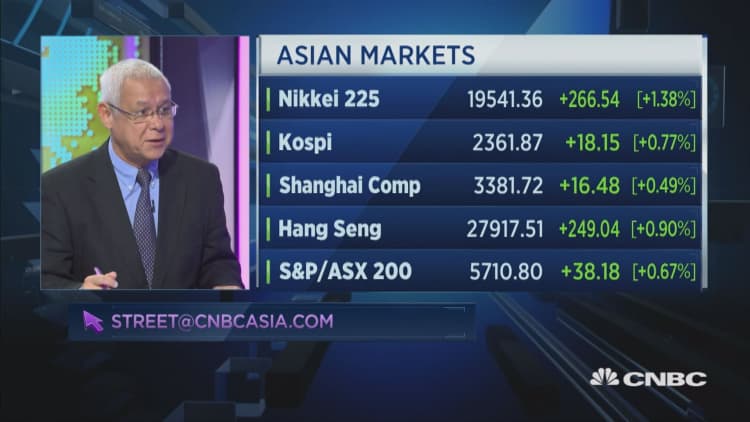
Consumer inflation was expected to rise moderately in August, but it should really start to heat up when gasoline prices and other impacts of hurricanes Harvey and Irma show up in September's data.
The Consumer Price Index is expected to rise 0.3 percent when it is reported Thursday at 8:30 a.m. ET. That would be an annual increase of 1.8 percent, the highest reading in several months.
"It's a precursor for what I think we're going to see in September," said Tom Simons, chief money market economist at Jefferies.
Americans across the country have already seen the first economic punch from Hurricane Harvey, at the pump nationally. That barely affected August inflation, but it should show up in headline inflation in September.
That could complicate an already puzzling picture for inflation, which has been stubbornly sluggish this year. As a result, many market pros are skeptical the Federal Reserve will be able to raise interest rates later this year, as it has forecast.
While Harvey could have just a modest impact on August inflation, the double whammy of Harvey and Irma could have created a sizable jump in weekly jobless claims, which Simons estimates will come in at 350,000. Claims were an elevated 298,000 last week, well above the recent trend.
Economists expect a 0.2 percent rise in August core CPI Thursday, which is the consumer prices index excluding food and fuel. On an annual basis, CPI core inflation is expected to be up 1.6 percent, still well below the Fed's 2 percent target. The Fed's preferred inflation measure, PCE deflator, showed an even lower pace of inflation, at 1.4 percent in July.
According to AAA, the national average gas price was $2.65 per gallon Wednesday, compared with $2.33 before Harvey ripped into the heart of the U.S. refining sector, dumping unprecedented rainfall across Texas. But particularly with reduced demand from Florida, where many homes and businesses are still without power due to Irma.
"We are going to get higher gas prices in August, but it won't be primarily because of Harvey. if you look at the seasonal patterns, August is typically a month when gasoline prices fall. They were rising modestly," said Stephen Stanley, chief economist at Amherst Pierpont. Producer price data showed a 9 percent jump in gas prices for August, but that does not always cross over into CPI data.
Stanley expects a 0.4 percent increase in CPI for August.
"You could get an upside surprise on energy prices, but it's still going to be a weak inflation number and it's going to leave the Fed [officials] fighting among themselves," said Diane Swonk, CEO of DS Economics. The Federal Open Market Committee meets Tuesday and Wednesday, and it is widely expected to begin a program to reduce its balance sheet.
While it is not expected to raise interest rates until December, the Fed could revise its forecast for interest rate hikes when it releases its economic forecasts Wednesday afternoon. Economists expect the storms to provide a temporary dent in U.S. GDP growth, but that could reverse by the end of the year as communities rebuild.
"There's going to be debate about how transient those distortions are because this rebuilding is going to take a long time," said Swonk. Economists said the impact of building could be slow since it will take time for homeowners to get reimbursed by insurance or other funds.
Swonk said the storms could continue to send inflationary ripples, as building materials rise and contractors pay up for construction workers in storm-ravaged areas. A U.S. tariff on Canadian lumber has already increased the cost of wood by an estimated $1,700 per home, she said.
Construction workers have already been in short supply. "We're already scarce labor and materials," she said.
She said one area that has been a drag on CPI has been new and used car prices. They could still be weaker in August but could start to reverse in September as residents in flooded areas replace vehicles.
Another area that could continue to show a decline is wireless services, expected to decline by about 0.2 percent. "We could continue to see that disappoint but I wouldn't expect it to go to zero. It's been a continued drag," Swonk said, adding that wireless telephone services prices are down about 13 percent in CPI as carriers offer restructured data plans.
This is one area that Fed Chair Janet Yellen has said was a transitory cost decline, but Swonk notes wireless has been falling in CPI since the middle of 2016 and the decline accelerated earlier this year.
WATCH: Investors around world chase yield as inflation looms



